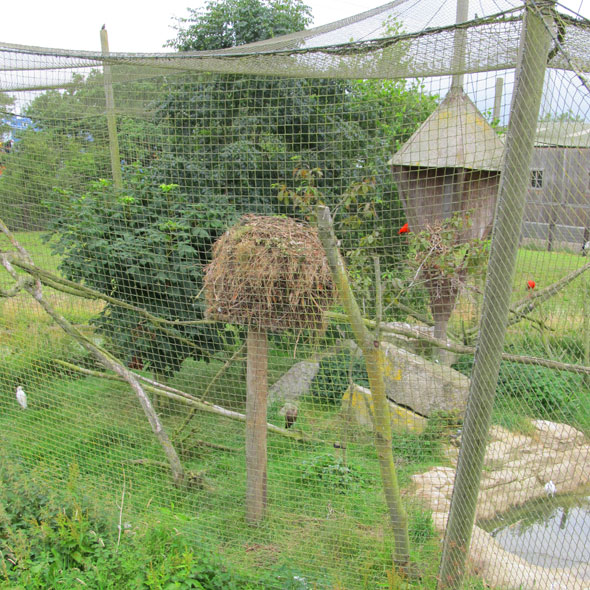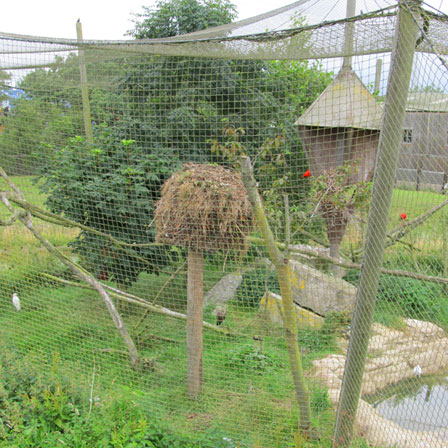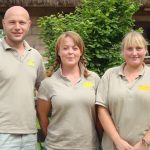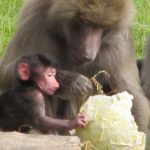What A Nest!

This week we are focusing on a very impressive bird. Hamerkops are no ordinary bird and especially here in Flamingo Land zoo they hold a special place close to our hearts.
The hamerkop bird is a large African water bird; they can live in a variety of habitats, from arid semi-deserts to farmland to forest. The main factor for a good habitat is water. They forage in reed beds and along shallow waters near sand beds. They feed on a diet of amphibians, small fish, worms and insects. But the most interesting and exciting aspect of the hamerkop is their nest. The nest is an elaborate hollow structure of sticks usually built in a fork of a tree. The male and female spend weeks collecting twigs and suitable nesting material, incorporating it into a fantastic extravagant arrangement. Again as water is a main priority in their life, hamerkops will build their nests in a tree overhanging the water or near a lake or river.
Here in the zoo, we try to replicate life in the wild as much as possible. This can include putting scent trails around the tiger enclosure, climbing equipment in the lemur enclosure or rock and sand in penguin coast, replicating their habitat in the wild. For our hamerkops, the art of nest making is one way they demonstrate their natural behaviour. For the last few weeks, every time I see our cat and bird keepers they are laden down with twigs, branches and nesting material. No one expected our hamerkops to be architects but the nest kept growing, so our keepers have to keep finding nesting materials to add to the enclosure. Our hamerkops are found in an aviary in our Africa paddock, next to the gushing water of the Lost River Ride. Here, surrounded by water, they feel at home and are showing off their skills to the visitors.
The hamerkop is also special to us for another reason. Flamingo Land zoo is part of EAZA (European Aquaria & Zoo Association) and some of our animals are part of breeding programmes. The hamerkop is one such animal. This breeding programme means that a studbook holder is in charge of the upkeep of an animal in captivity. The studbook keeper is responsible for collecting all the data on births, deaths, transfers etc from all the EAZA zoos and aquariums that keep the animal in question. This data is entered in special computer software programmes, which allow the studbook keeper to carry out analyses of the population of that species. Here at Flamingo Land, Zoo Manager Ross Snipp is the studbook holder for the hamerkop.
By collecting and analysing all the relevant information on the species, the studbook keeper can judge if it is doing well in EAZA zoos and aquariums, or if maybe a more rigid management is needed to maintain a healthy population over the long term.
Our hamerkop pair and their fantastic looking nest are on show in our Lost Kingdom area of the zoo. They share their aviary with scarlet ibis, cattle and little egrets, demoisielle crane and sacred ibis. We are all eagerly awaiting the laying of eggs and seeing how big the nest gets!



